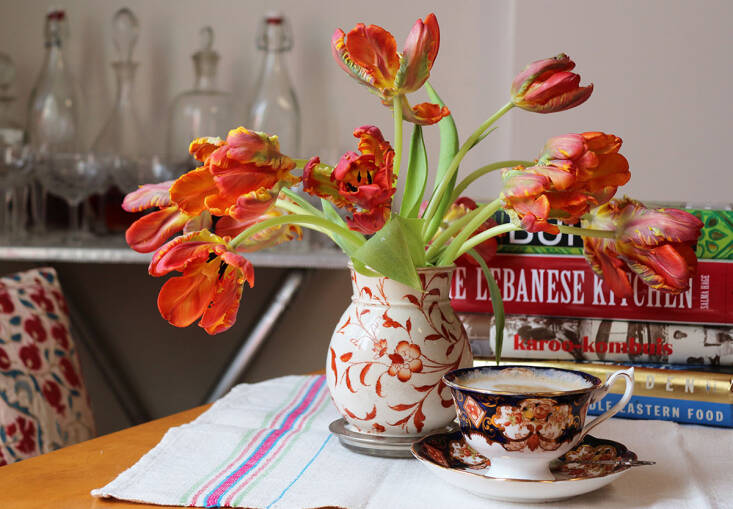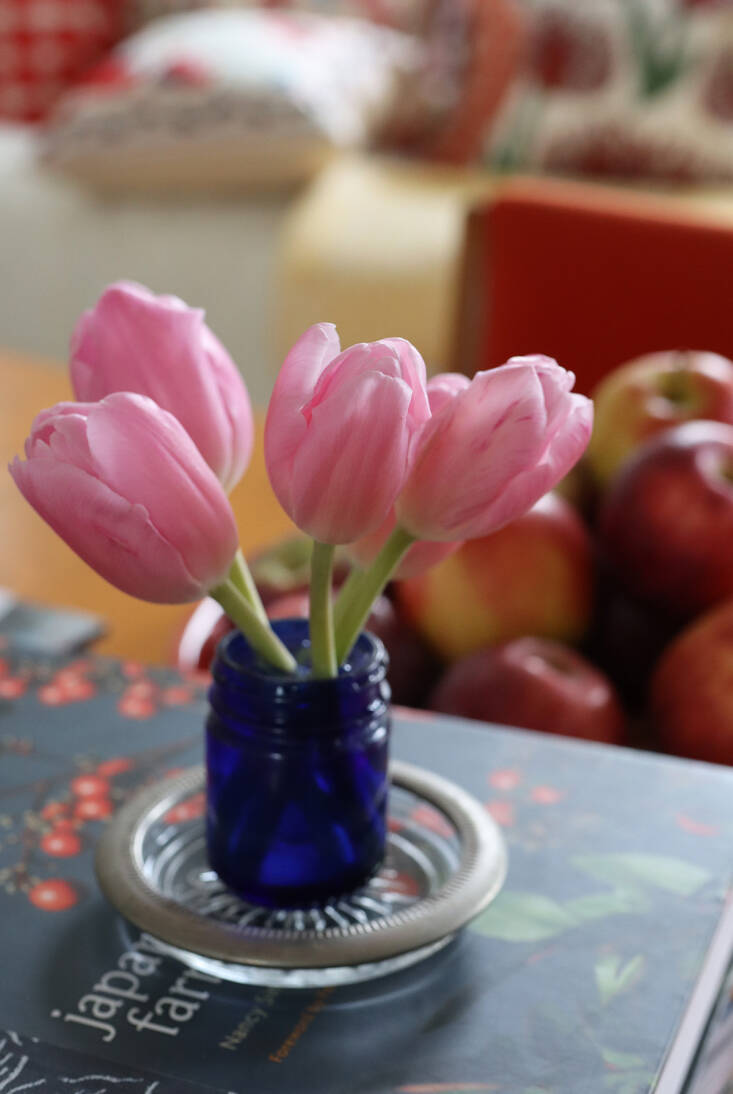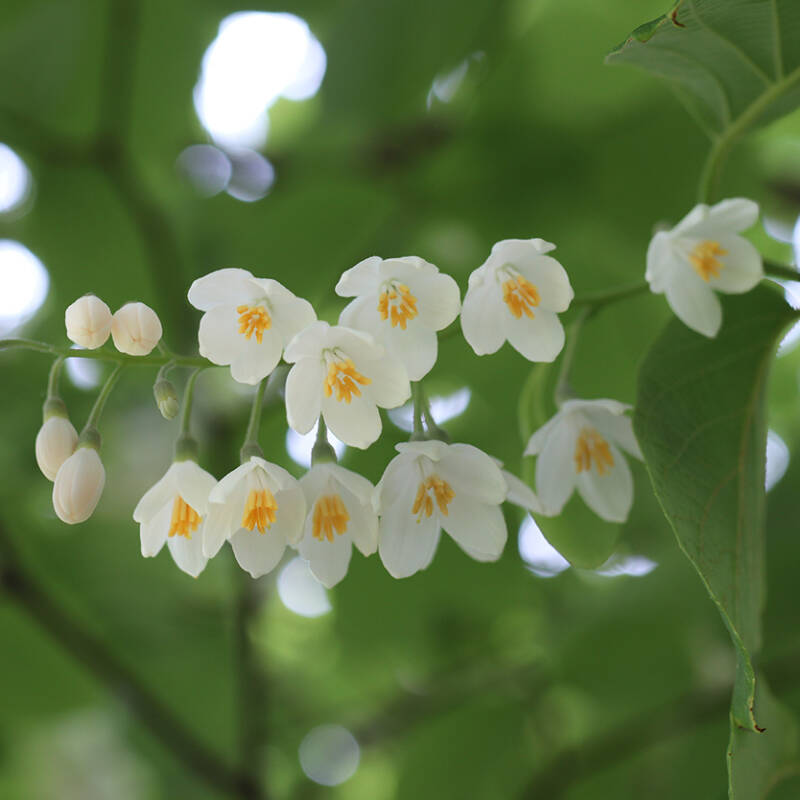There are a few chosen constants in life—necessary domestic objects that become our anchors, or even beacons, to hold us fast or to draw us forward within the unpredictable currents of personal or public events. These objects are different for everyone, of course. For me, they are books (always), and, in late winter, a weekly sheaf of tulips, bought from a local deli, their buds pointedly closed, their leaves squeaking with freshness. They are simple, reliable, and gratifyingly long-lasting. Their form and silhouette evolving voluptuously as days pass, a pleasure in its own right. Catching a glimpse of the flowers in the room where you work, sleep, or cook is a small but potent reminder that beauty exists.
Here’s how to choose, and to keep, tulips fresh. And: Did you know that tulips are edible?
Photography by Marie Viljoen.

Affordable city tulips’ immediate origins are humble: In New York it is the quintessential corner store, purveying fresh produce, groceries, sandwiches, life essentials, and, often, cut flowers. In January or February tulips appear, flown in from Holland or trucked under-or-over the Hudson River from where they grow in covered tunnels in New Jersey. In buckets on the sidewalk, they stay fresh in the cold air and thin winter light.

Constants being constants, and rituals requiring repetition, my chosen tulip vase is (almost) always the same—one I found in a junk shop in Adams Morgan, Washington, DC, when I was a new immigrant to the US. Catching a glimpse of it, filled with flowers, tells me my own story, quickly.
But these lovely flowers work in any vessel.


Whether the tulips are long-stemmed or chopped short, jam jars, old bottles, and thrift store finds work perfectly.

How to choose tulips: Counterintuitively, tulips that show the least color will last the longest. They will also be tightly closed. Back home, in their vase, they will develop whatever their saturated color is destined to be, and their blooms will also continue to grow larger, opening slowly in the light and warmth of the room you choose to place them. Tulips bought in tight bud and given ample water should last at least a week, or longer, if you follow some extra pointers.


Tulips that do show a lot of color are many more days past their harvest-date. They may deliver instant gratification (which is good if you need that in a hurry for a flash party), but they will not last long.

Once home, a decision has to be made: Strip off all the leaves, or leave them? Keeping the leaves will bulk up a larger vase, but as time passes, and the leaf-tips begin to dry, you will have to strip them off to keep the focus on the still-beautiful blooms. Also, more leaves in the water will speed up the development of bacteria, and most florists send flowers into water with foliage-free stems for that reason. Sachets of flower “food” contain either citric acid or bleach to tame those bacteria. (Personally, I have not found the sachets to prolong my deli tulips’ lives.)

I usually remove most of the foliage, leaving just the leaves highest on the stem. The flowers look more spring-like against the fresh green. Next step, give the stems a fresh cut and place them in plenty of cool water. Tulips are thirsty, so check the container every day, picking it up to weigh it by feel. It will become suspiciously light quite quickly. Top it up, or replace the water entirely as the level drops.

On day one or two, tulips tend to stand bolt upright, as if shocked (shocked!) to find themselves where they are. If this is unnerving, coax their stems gently loose from the mouth of the vase into a more natural attitude.

After a few days they begin to relax elegantly.

The New York artist Abbie Zabar, a connoisseuse of bodega flowers, whose 2021 series of colored pencil drawings, Bodega Bouquets, pays tribute to the floral denizens of delis and supermarkets, prefers the relaxed stage of tulips. “I like a bunch of tulips when the stems get lanky and wiry,” she writes in an email. And she goes on to give us a hot tip: Skip the bolt-upright stage altogether and “keep just a shallow bit of water in the vase,” to encourage that looser, blowsy tulip silhouette.

Around the five to six-day mark I find that tulips’ leaves turn dark and dry at the tips and begin to look mangy. They are easily transformed and their dignity restored by a quick stripping of any remaining leaves. Re-cut the base of their stems, too (at the base if you want them sinuously elegant, or chopped short for a full, ruffled look).



Tulip petals are edible (and very mild). But their prettiness is irresistible. I use them to frame fresh, molded cheese, and also as ephemeral, edible spoons for small rounds of goats cheese topped with tiny, edible spring flowers, or dry fruit, or nuts. I prefer to use organically (or home-) grown tulips for eating.

At the one-week mark, tulips are wide open and plush. A few more days and their petals will begin dropping, and their colors may fade, but they are gorgeous until their very last breath. If only we could age with such grace, and with such minimal intervention.
See also:
- Required Reading: ‘Punk Ikebana: Reimagining the Art of Floral Design’
- Gardening 101: Growing Tulips the New Dutch Way
- DIY: How to Make a Vase of Cut Flowers Last a Week









Have a Question or Comment About This Post?
Join the conversation